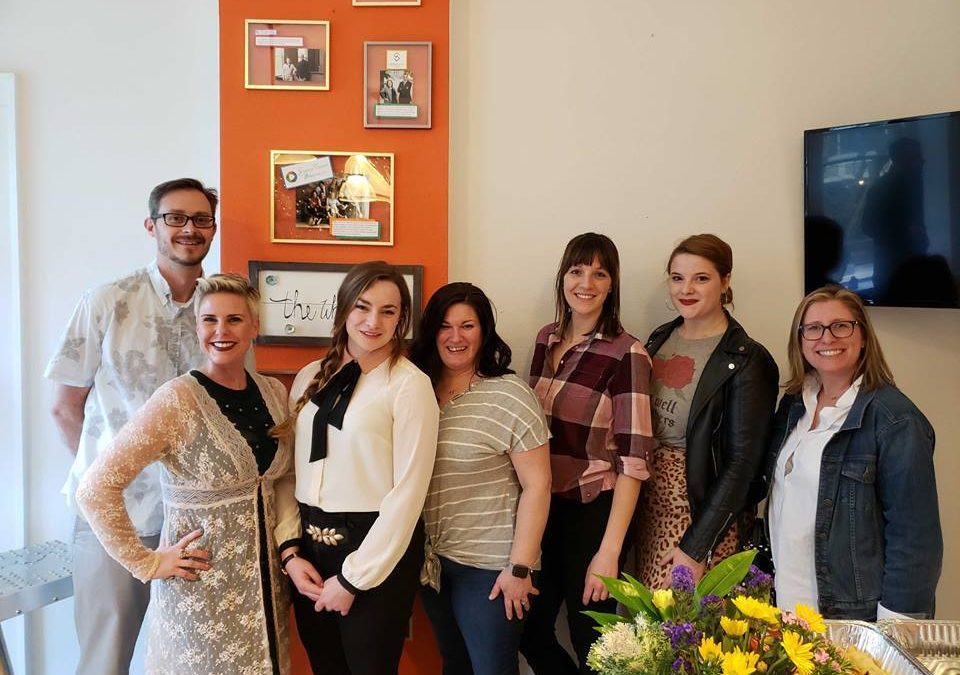“Youth don’t care what you know, until they know how much you care.” This quote hung on the wall of one of the most inspirational people in my life–my agriculture teacher, Mr. A. He was more like my second dad, and he lived this message every day. This was his authentic personal brand, long before a personal brand was even a thing, or before ‘authentic’ was the word of the year.
This quote also captures the essence of Marketing in the Experience Era.
You may be thinking, huh? What does a teacher have to do with customer experience?
Just like youth being more receptive to teachers who show that they care, customers want an authentic experience with your company; and not just some one-time thing because it made your company look good. That’s not an authentic experience. Customers want to FEEL good about buying from you. That’s the positive experience they desire. Making that experience a reality might sound a bit exhausting, right?
It doesn’t have to be. Not when your brand is clearly rooted in values (any values, you choose), and that comes through in genuine customer experiences. It’s no longer about show-and-tell. It’s about feeling. Mr. A. was on to something far before his time…
How things have changed
Let’s take a look back so we can see just how much things have changed:
Baby Boomers, (born 1946-1964) grew up in the era when the television was king. The TV was invented in 1927. In 1930, only 9% of US households had a television; by 1960 it was 90%. So, boomers grew up in an era where families were excitedly purchasing TVs, and it became a focal point for families to gather and engage in TV media as a one-way communication stream.
Next came Generation X, who grew up in the rise of the Information Technology Era and the emergence of computers, and eventually, the internet. This audience grew up learning how to seek out information online.
For most of the Baby Boomer’s and Gen Xer’s lives, they were provided a one-way communication channel: being given messages and provided information. If a company provided poor customer service or didn’t live up to their promises, there wasn’t a feedback loop for customers to publicly voice their concerns. The most that a dissatisfied customer could do was stop shopping there, or complain to ‘Nancy’ down the street.
Millennials (born 1981-1997), grew up in the age of the proliferation of digital media including the rise of connectivity everywhere.
Today, customers have the power to hold brands accountable, with social media platforms and forums to voice opinions online and in the mainstream media. Today, customers can even find data about companies, how much they pay their leadership, follow or break laws, or invest back in their staff and the community.
This evolution in technology has allowed for greater accountability and engagement between customers and businesses; it’s created a two-way communication loop, and it’s provided platforms for customers to sing praises and shout frustrations about companies.
Much of the cultural changes that companies are seeing about what employees value, is being driven by a millennial audience who has grown up with different expectations for companies. Studies show that millennials will sacrifice higher earnings in order to work for a company with whom they feel purpose and align on the mission. Millennials are willing to spend more for the same product or service with a company if they get a better experience and align on values. These new priorities among a millennial workforce and customer base are impacting how businesses need to adapt their marketing for the Experience Era, and these adaptations need to occur both internally in company culture and externally in the message that’s shared with the market. What you say and do needs to be authentic from the inside out.
Adapting your marketing for the Experience Era requires more than shifting your marketing. It requires adaptation at every level in business. That’s what makes it both difficult, and fun, and why those who adapt will reap the biggest rewards.
Youth don’t care how much you know until they know how much you care. And customers don’t care how great you say you are until they feel that it’s the truth.
For the last 20+ years, we’ve been experiencing the Information Revolution. In this Information Technology Era, people became empowered to seek out information and have it available at their fingertips. But a change is happening… People no longer think of the internet or a perfectly designed website as a luxury. It’s an expectation; and today, customer’s expectations have evolved even further.
ENTER: The experience era
Your brand’s experience is more than ‘good’ customer service. In fact, there’s a huge difference between customer service and customer experience (CX). Customer service typically happens after the sale: servicing the customers. CX is a more thought-out overall experience that involves everything that your company does before, during, and after someone is a customer. This includes their first impression, how you engage with them online and being intentional in the emotional connection that you’re striving to create with your brand. Even if someone never becomes a customer, the experience is there. What’s the entire experience like engaging with your company?
Today, your business can’t simply provide information online and thrive. To thrive in the experience, your company must evoke emotion and take the customer on a journey. Enter: The Experience Era.
Customers today expect a brand experience (and PS: your small business IS a brand). They seek to be engaged in meaningful customer journeys. Below are 3 simple strategies you can implement in your business to ensure that your brand is keeping up with customer expectations and that you’re marketing for the era that you’re in.
Three Steps to Market in the Experience Era
1) Create a clear CX vision rooted in Values
Maybe you already know your brand, your values, your mission. If you don’t, start here. When your company approach is rooted in values, it allows you to more easily attract ideal clients. Remember, customers are more like to buy from companies in which they align on values, so if you want to own your space in the market, lead with values and more like-minded customers will come.
Integrate the values into your team culture, so that everyone knows what’s expected. Revisit your mission statement, and discuss it with your team so that everyone knows what you’re striving for and can unite around a company goal.
How this translates into a positive customer experience is that it creates a common bond, or a common thread, throughout the experience, connecting your company and your staff, to your ideal clients, because everyone is aligned with the same values.
2) Align with your customers (this might mean take a stand)
More and more customers are expecting companies to take a stand on political and social issues.
This doesn’t have to be political, but for some businesses, it will be. Nearly one-half of Millennials (47%) believe CEOs have a responsibility to speak up about issues that are important to society, far outpacing the sentiments of Baby Boomers (28%). (Source) Take Nike and their recent stance on NFL policies. That demand for a stance is climbing in younger generations, too: 53% of Gen Z customers buy products to support a cause, and 40% stop buying from or boycott brands based on social issues. (Source) So if your brand targets anyone under 40, aligning with your customers probably means taking a stand on controversial issues.
It’s important to understand what your customers want before your competitors do. How can you learn what they want? Ask them. This can include customer surveys, or even, old fashion conversations face to face, or by calling them and offering them an opportunity to tell you what they’re thinking, honestly. Giving customers an opportunity to speak (and truly be heard!) can provide deeper insights into what customers are truly thinking and feeling. Think about the top 3 companies that you are most committed to, where you consistently purchase from. It could be where you buy groceries, order a product online, or get your car serviced. Maybe you love them, but there are also things that they could improve. Consider the deepened connection that could be established if the owner, founder, a manager, anyone from that company invited you to provide your valued feedback in a 1-1 conversation? It would likely show that the company actually cares, and I’m willing to bet that you feel better about giving your money to companies that care.
3) Create engaging in-person experiences
In 2019, 20% of business marketing budgets were allocated to experiential marketing. Creating engaging experiences can not only make for a unique brand experience but also creates a space for your customers to do a lot of word-of-mouth marketing for you. You can create engaging in-person experiences by:
- Being authentic: Create an experience that’s consistent with your brand values. If you’re a no-waste office products supplier who believes in minimizing the environmental impact of office supplies, don’t throw a customer appreciation picnic party with single-use plastic plates and cups. Instead, you could create a temporary outdoor office space in a local park, and open it up to the public.
- Delight customers: Ever heard of FOMO? Even if you haven’t heard the term, you’ve likely experienced the feeling of ‘missing out’ when you see a fun event shared on Facebook. Create a delightful experience for your customers that attend, and you create FOMO for your future events.
- Be visual and shareworthy: This is how you leverage your customer’s social networks. Are you a realtor and your client closed on a home? Take a picture of them in front of their new house! This is a share-worthy purchase that will get great engagement from your client’s social media network, putting your brand in front of new audiences. If you’re a consultant or a coach, do a live stream Q&A with one of your clients that experienced some success recently. If it sparks conversation, creates excitement, or provides educational value, it is share-worthy. Ask, what can you create at your next event that will make people want to take photos or video, and share it with their network? What can you include to create a memorable experience, that will have your audience sharing, and remembering that experience, for years to come?
It’s no longer enough to offer a flash in the pan sale. The Experience Era requires engaging, authentic connections, and that’s created through an intentional brand and customer experience strategy.
If you’re not sure how to develop or implement a customer experience strategy, reach on out. We’re in the business of helping values-driven businesses like you to have a greater impact, through more strategic marketing. Find out what that could mean for you.

